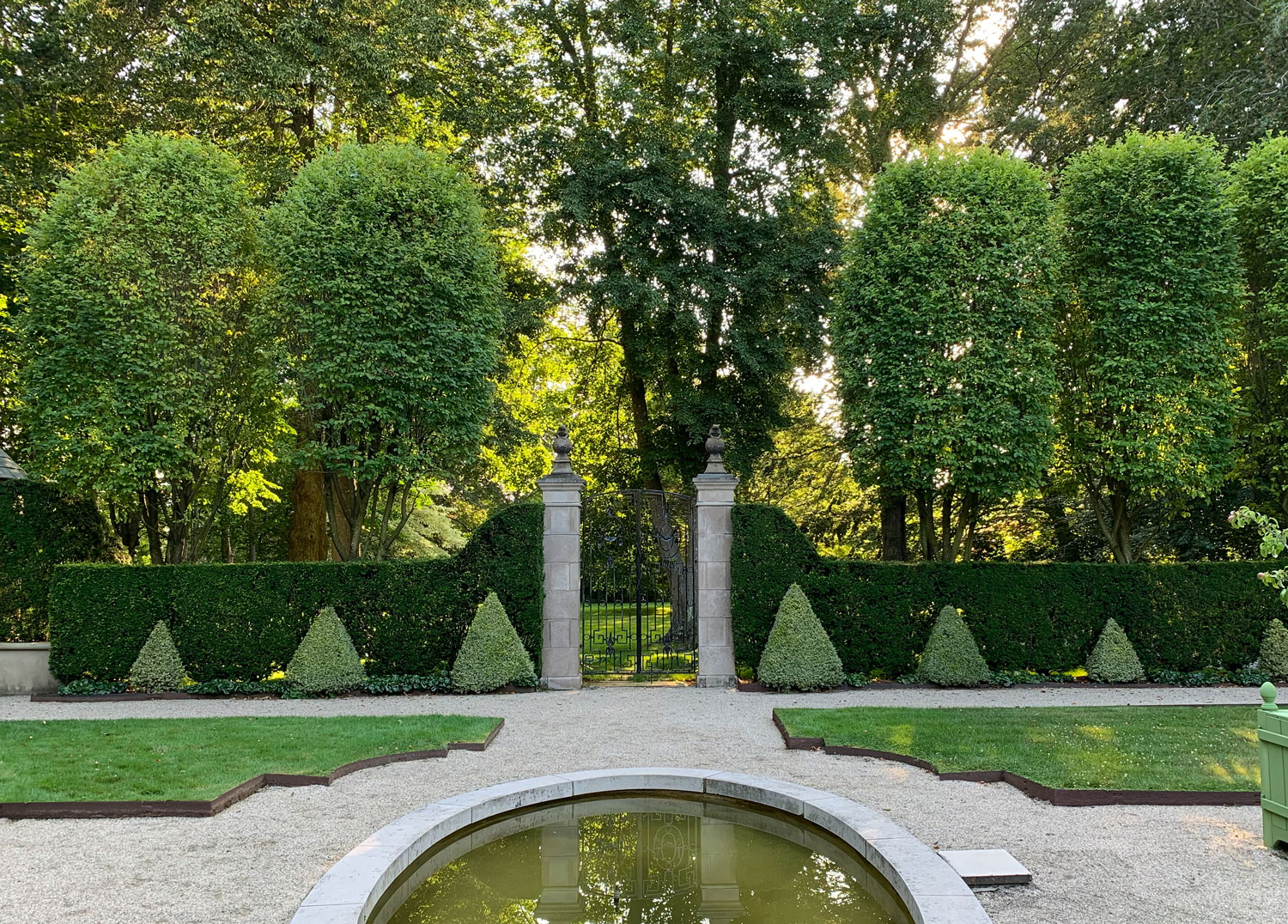
Last week I posted about a very favorite topic for this gardener, hedges. And what’s the natural follow-on? Topiaries, the next step in a hedges artistic evolution.The art of training, trimming, and clipping plant material has been around since Roman times and was a fixture in 15th and 16th century Renaissance gardens of Europe. Indeed, they provide a garden with timeless appeal. Today, I’m going to stay close to home and highlight those examples I’ve collected in and around the Newport community.
At Parterre, various forms of topiaries have proven invaluable in giving the formal gardens a strong framework. In the image above, variegated boxwood is clipped into pyramids that front a yew hedge from which five amelanchiars (shadblow) are maintained in a teardrop effect. Below, the four ‘Hally Jolivette’ cherries in the Orangerie parterres have professional pruning twice a year to achieve their desired profile.
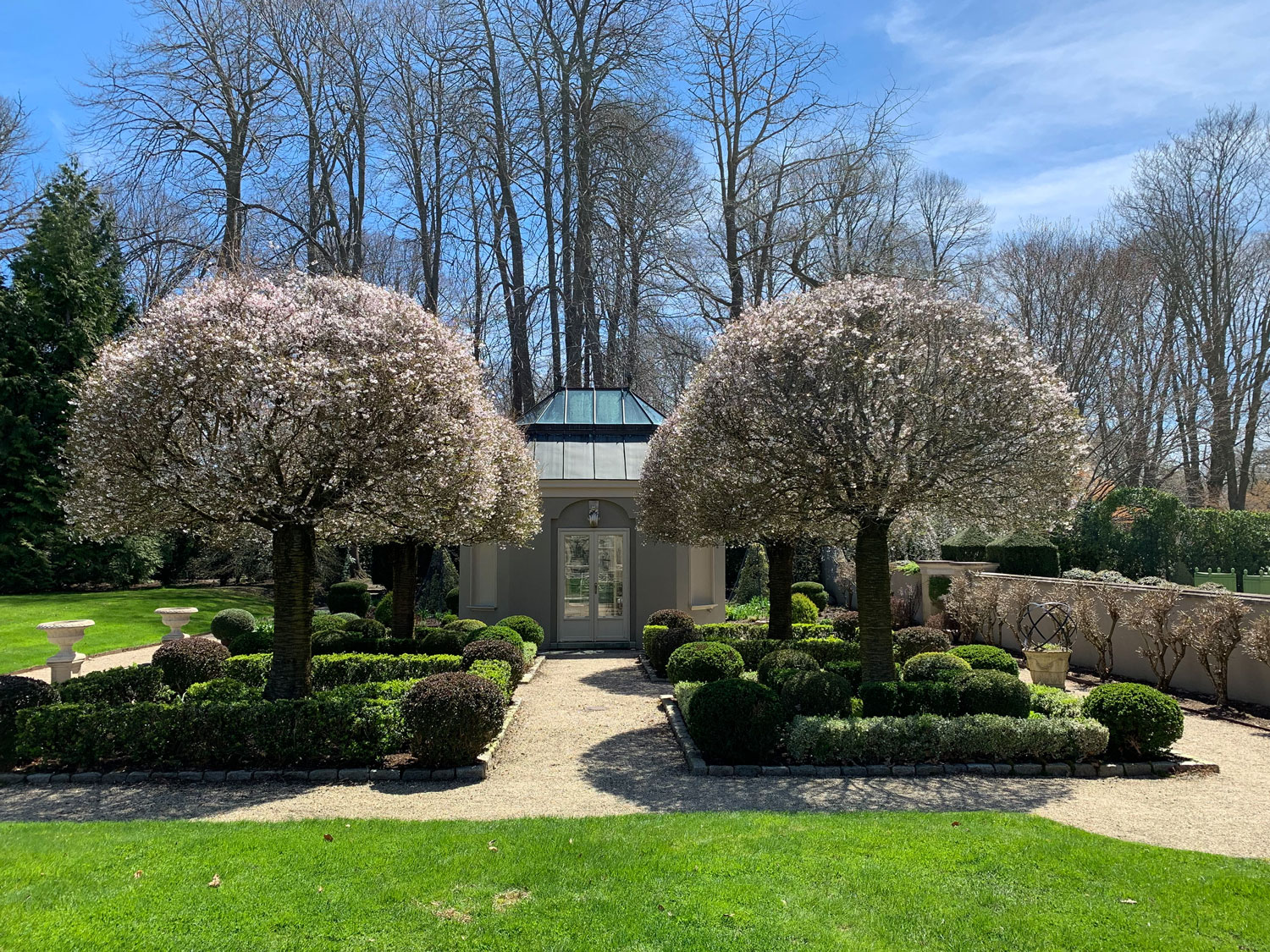
In the garden beds, topiaried yellow barberry act as punctuations along the metal edging while a variegated euonymous “obelisk” centers each bed. On a personal note, I’ve found topiary shapes to be of great service to a large (as here) herbaceous border that at times can look a bit messy or have missing gaps as the flowering season moves along. The tidy darlings help bring a “purposeful” appearance to the beds as well as filling in holes!

In addition to introducing structure and punctuation to a garden, topiaries for me are also an opportunity to have a bit of fun…bringing whimsy to a French property. So why not a French brioche created out of boxwood?
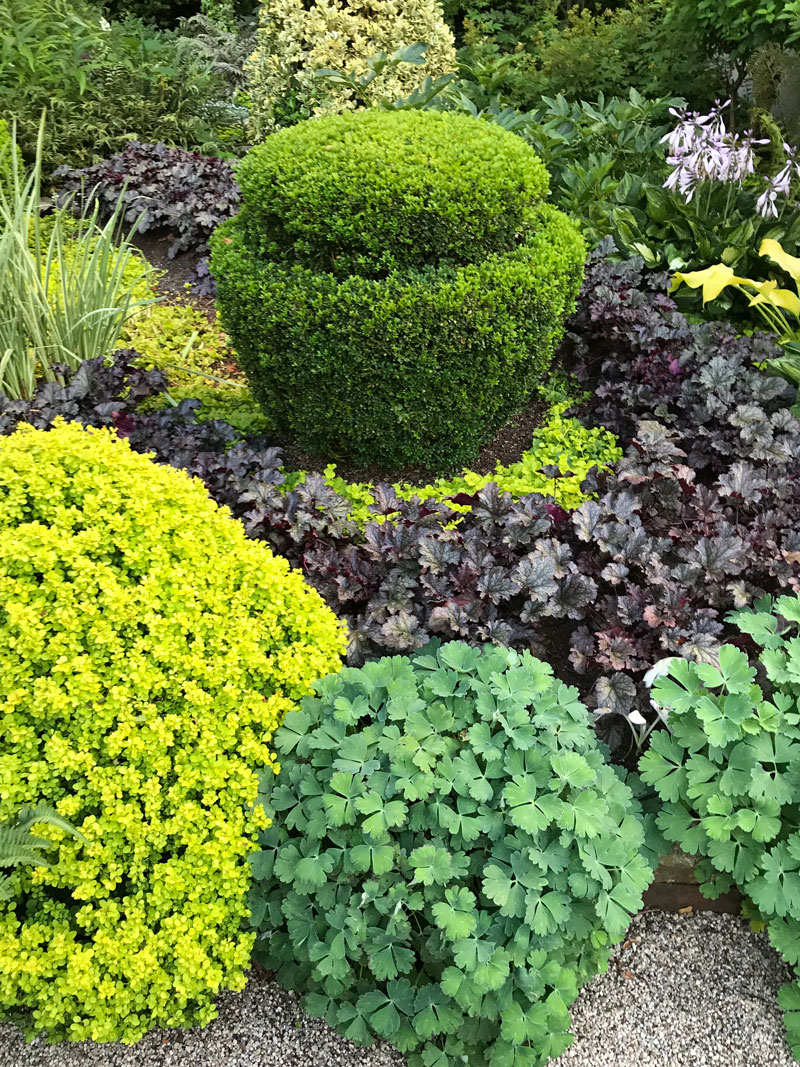
Up the street from Parterre, another French estate, the Elms, has exquisite (and dare I say, expensive) examples of large beech trees tightly pruned into tall “topiaries.” It is even more compelling to see them now, in the winter before they leaf out, to fully apppreciate the intricate detail that goes into this process of maintaining a shape that began when they were young trees.
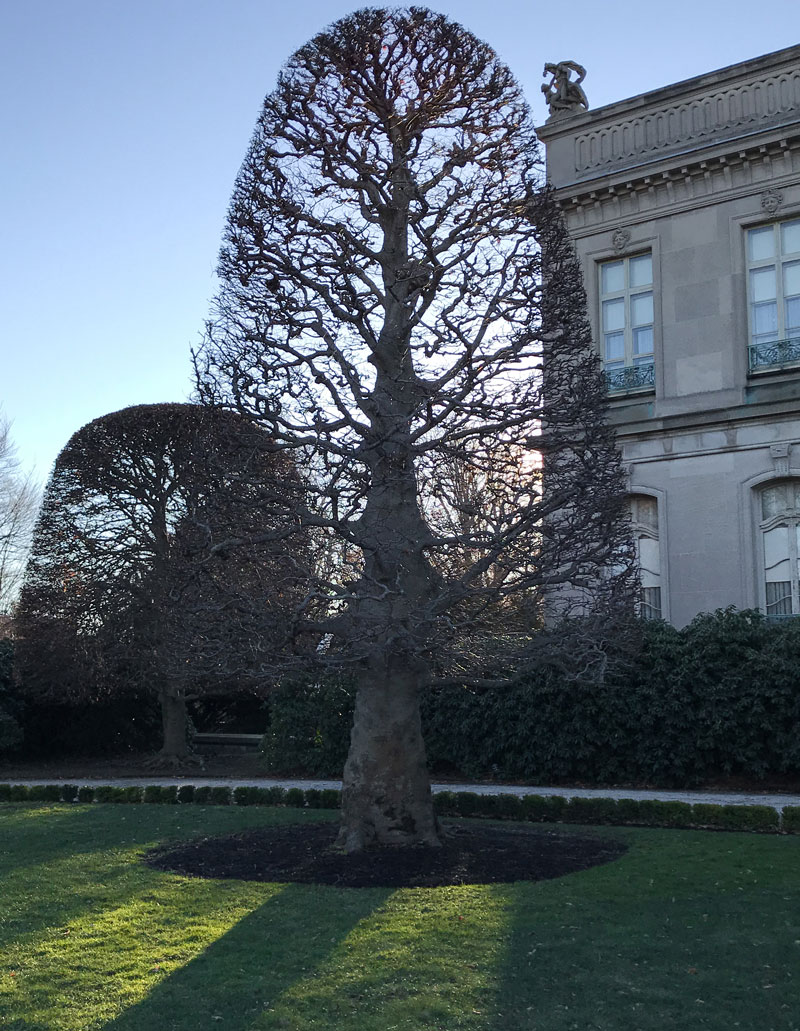
On the back lawn of the Elms, a long row of clipped evergreens carry out the formal elegance of this French chateau…looking rather like a regiment of green sentries.

On the north end of our island resides the oldest topiary garden in the country, appropriately named Green Animals. The following three images are just a small selection of the treasures that await a visitor. Created in the early twentieth century, it is under the stewardship of the Preservation Society of Newport County (a full post on this magical garden is on my schedule for the summer).
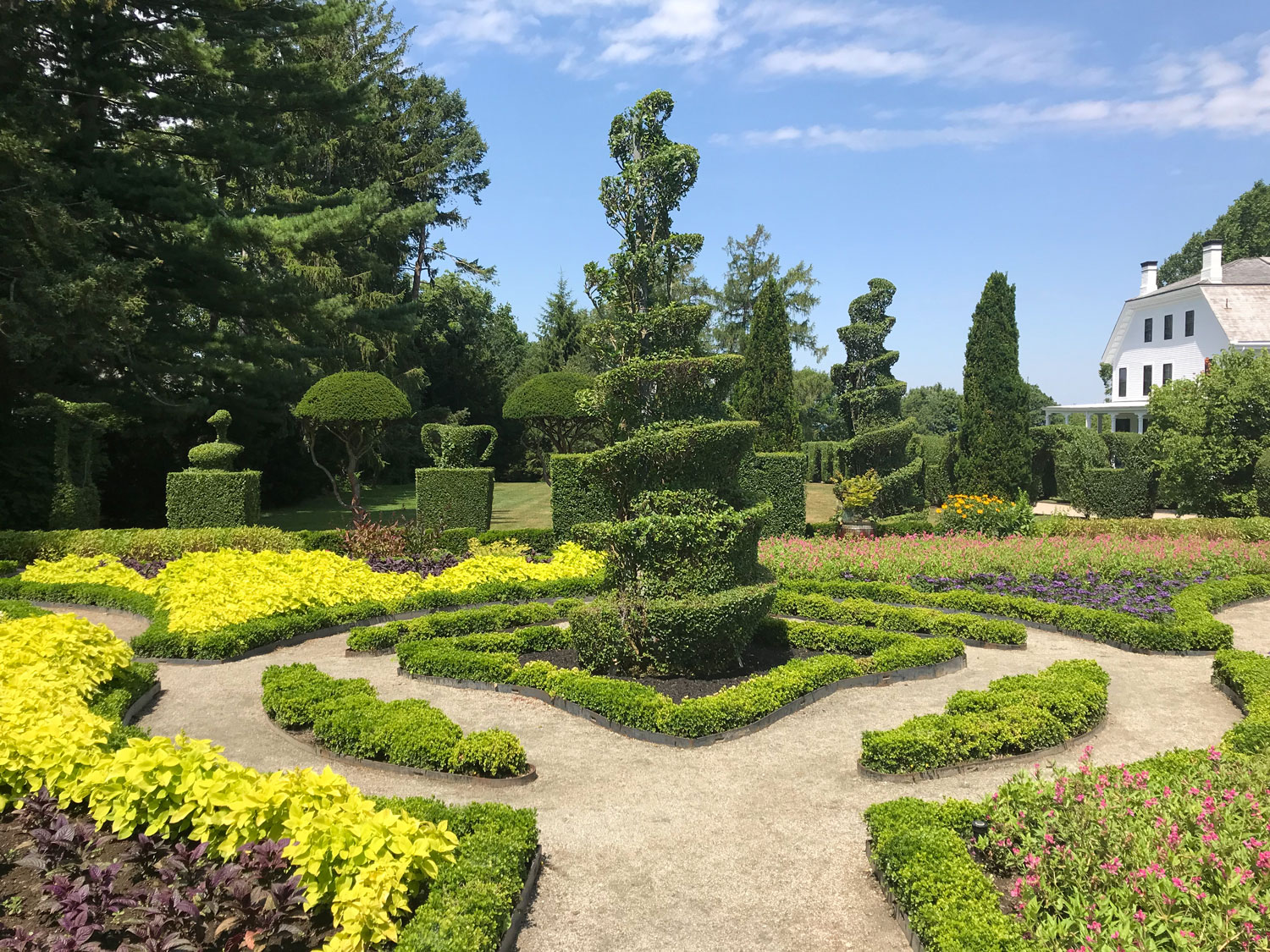
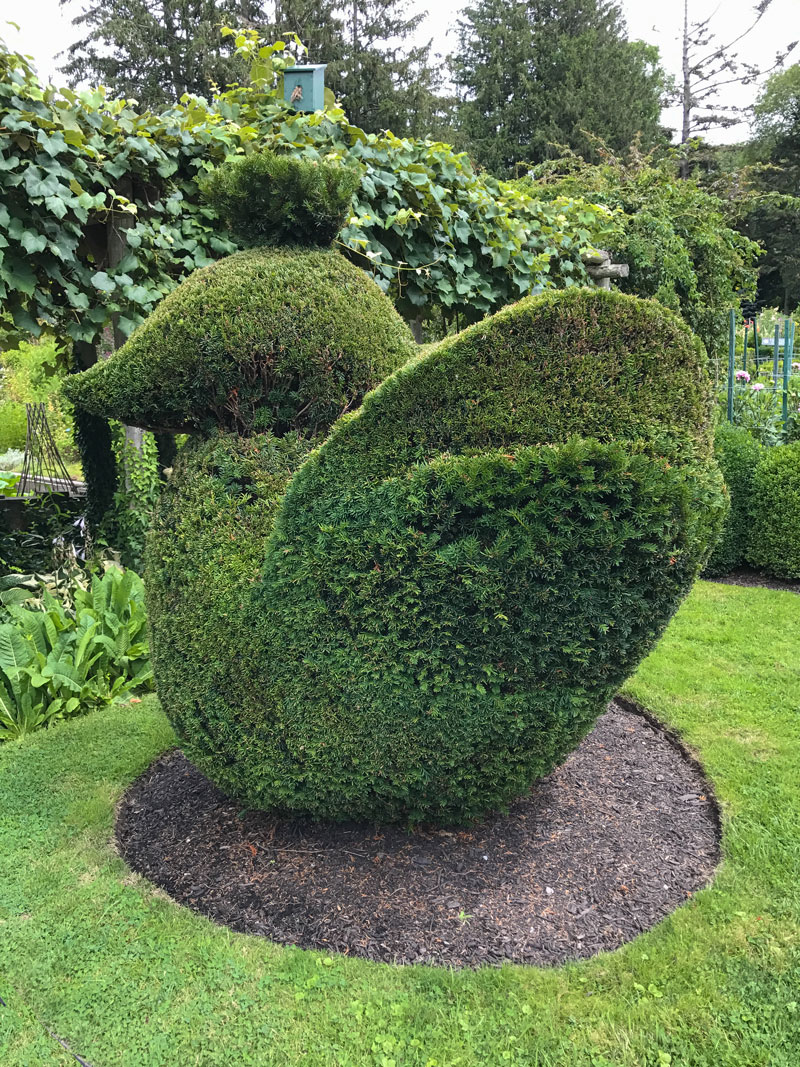
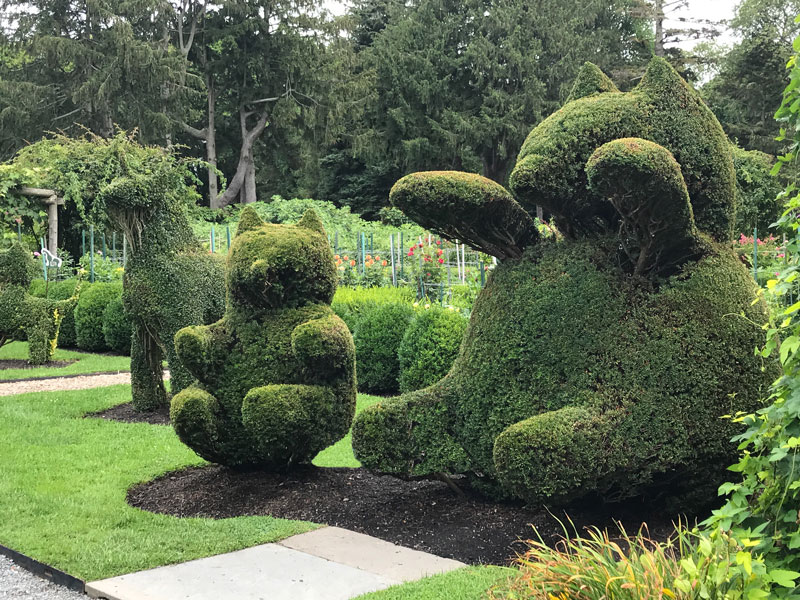
In Little Compton (just across the Sakonnet River from Newport) the two very witty owners of Sakonnet Gardens never fail to amuse with their pruning talents (and carpentry creations).
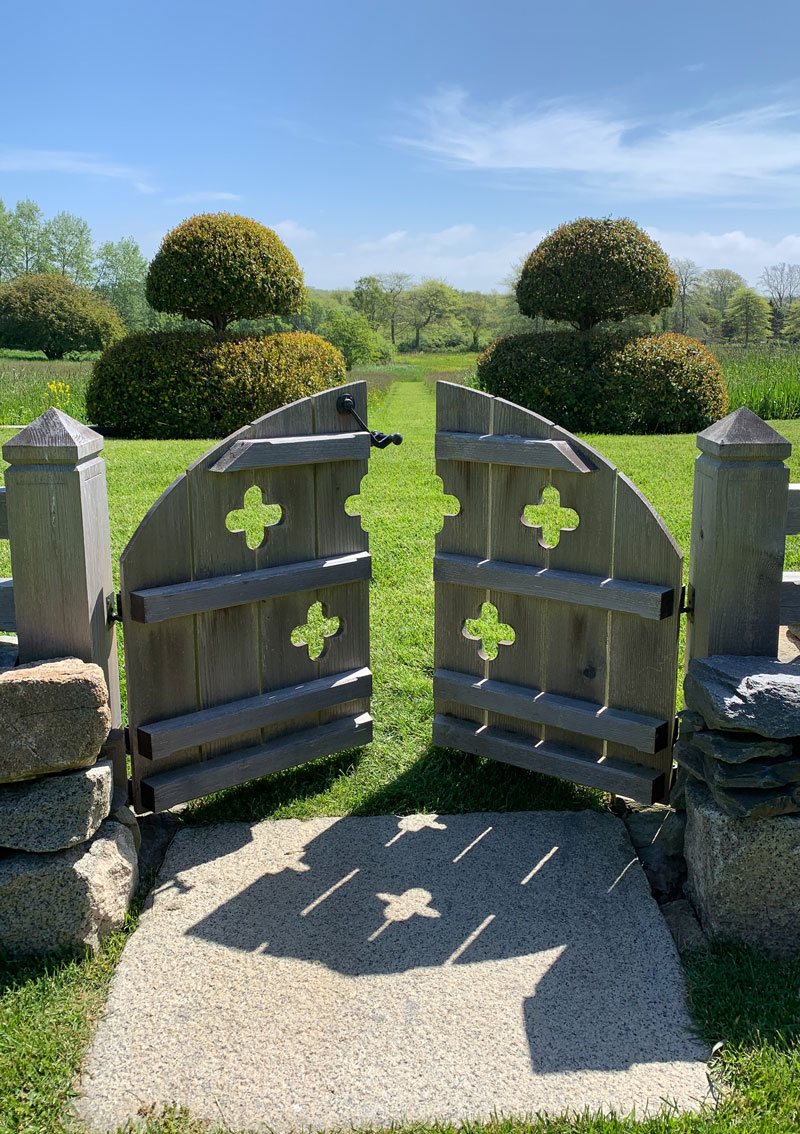
The time-honored art of training, trimming and pruning plants creates a sense of permanence and place in a garden that otherwise can be challenging to achieve with just flowering plants alone. You just might want to have a try at it…Be safe and Be well.



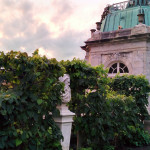





Thank you Bettie, for sharing these Verdant beauties! I am such a fan! I have a front and back yard full of well trimmed hedges and topiaries. Such a perfect topic!
Oh Martha, how fortunate you are! Send along some pics, please. xB
Beautiful pictures, Miss Bettie. I enjoyed this.
Paul
How SPECTACULAR!!!! Thank as always for sharing the joy of beauty.
You’re welcome, my dear!We can always count on beauty to bring us joy…xB
We always enjoy our trips to see the lovely topiaries at Ladew Gardens in MD. Had a spring day trip planned there, but that’s a no-go with this pandemic. Thank you for sharing the lovely photos–helps to see pretty things and hear happy thoughts, especially right now. Stay safe!
Thank you for sharing your knowledge and passion.
Edward T King
It’s a small token of my love for this country and planet….xB